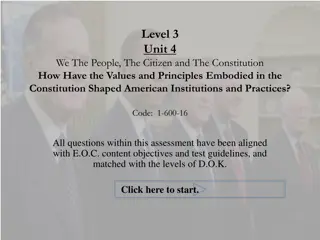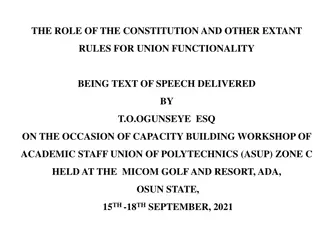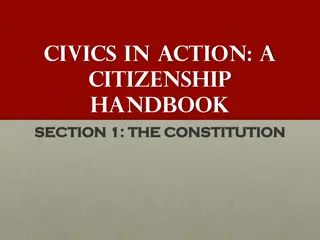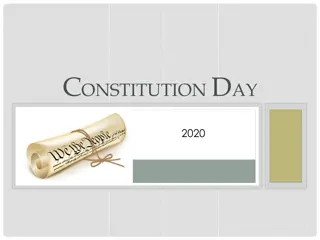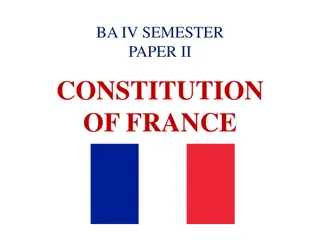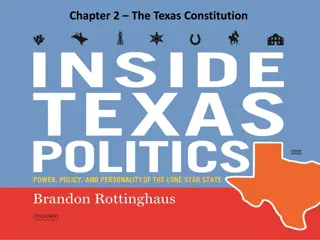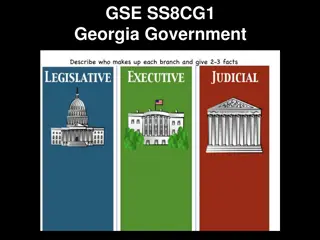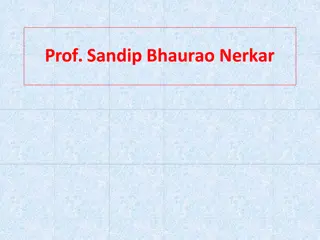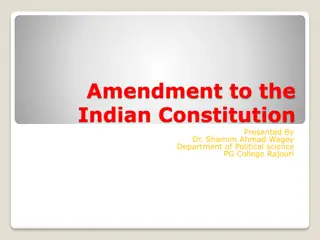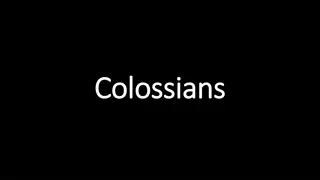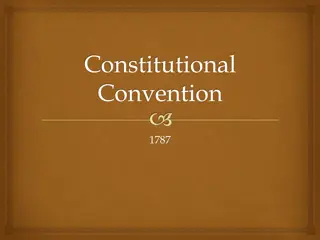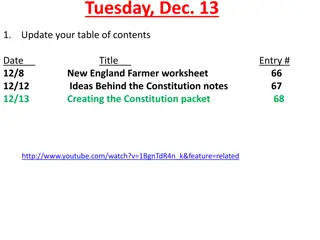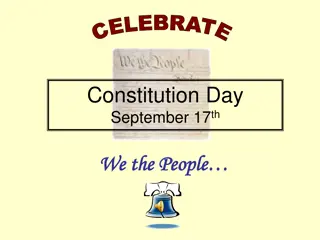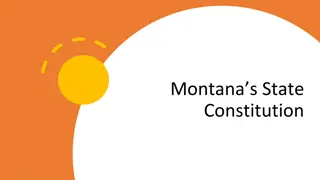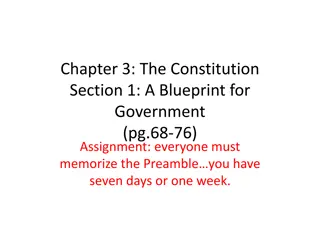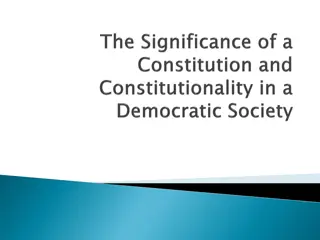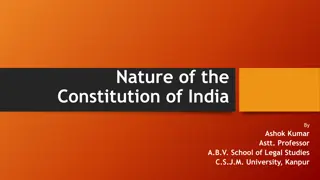Putting the Constitution into Effect: Early American Government Insights
Explore the early days of American government post-Constitutional ratification, from George Washington's presidency to the formation of political parties. Delve into key figures like Washington, Hamilton, and Jefferson, and their roles in implementing the Constitution. Understand the debates between strict and loose constructionists, and how they shape modern governance.
Download Presentation

Please find below an Image/Link to download the presentation.
The content on the website is provided AS IS for your information and personal use only. It may not be sold, licensed, or shared on other websites without obtaining consent from the author.If you encounter any issues during the download, it is possible that the publisher has removed the file from their server.
You are allowed to download the files provided on this website for personal or commercial use, subject to the condition that they are used lawfully. All files are the property of their respective owners.
The content on the website is provided AS IS for your information and personal use only. It may not be sold, licensed, or shared on other websites without obtaining consent from the author.
E N D
Presentation Transcript
REVIEW ASSIGNMENT #2 Putting the Constitution into Effect
George Washington The first President of the United States was George Washington Washington established the Cabinet a group of advisors to the President Secretary of Treasury was Alexander Hamilton Secretary of State was Thomas Jefferson
Financial Plan Alexander Hamilton s financial plan included a National Bank, a protective tariff and an excise (sales) tax on whiskey. Hamilton s plan caused controversy. The Whiskey Rebellion demonstrated that the new government intended to enforce national laws.
This led to the passage of the 22ndAmendment which limits the president to two terms After serving two terms of office, Washington did NOT run for a third term as President; A tradition that was not broken until Franklin Roosevelt - 1940
Washingtons Farewell Address Washington warned of two things: A. no foreign alliances B. No political parties
During Washingtons Presidency, the first national debate began between the strict and loose constructionists. How did each group view the Constitution? Give a modern day example of each view.
Strict Constructionist Strict Constructionist Government can only do those things that are specifically stated in the Constitution 2ndAmendment Right to bear arms means allowing people to own guns
Loose Constructionist Favor looking at the Constitution broadly and allowing it to meet changing times Modern Example- Patriot Act Social Security
Political Parties Political Parties developed through custom and tradition The first two parties were the Federalists led by Alexander Hamilton and the Democratic-Republicans led by Thomas Jefferson
Three Main Ideas of each political party: Federalists 1. strong national government 2. favored national bank 3. wealthy and well-educated men should lead Dem-Republicans 1. strong state government 2. opposed the national bank 3. Common man should lead
Louisiana Purchase President Jefferson overcame his strict constructionist views in order to purchase Louisiana which doubled the size of the United States.
Judicial Interpretation Decision Established judicial review Strengthened national supremacy and the use of the elastic clause Expanded the power of the national government in commerce Court Case Marbury v. Madison McCulloch v. Maryland Gibbons v. Ogden
War of 1812 War of 1812 demonstrated that the United States was becoming a more powerful nation.
Monroe Doctrine In 1823, the Monroe Doctrine was introduced, which became the foundation of the United States foreign policy in the Western Hemisphere. The Monroe Doctrine called for: An end to European colonization in the Western Hemisphere NO intervention by Europe in existing nations in the Western Hemisphere


